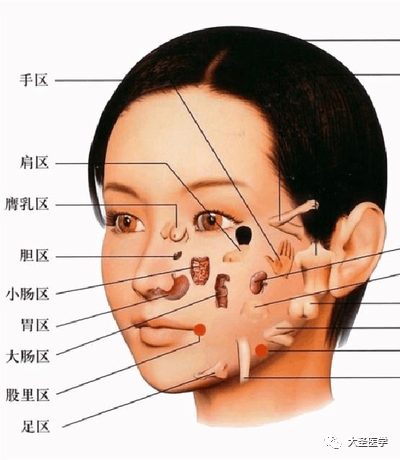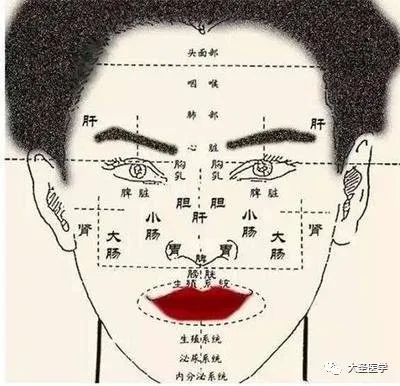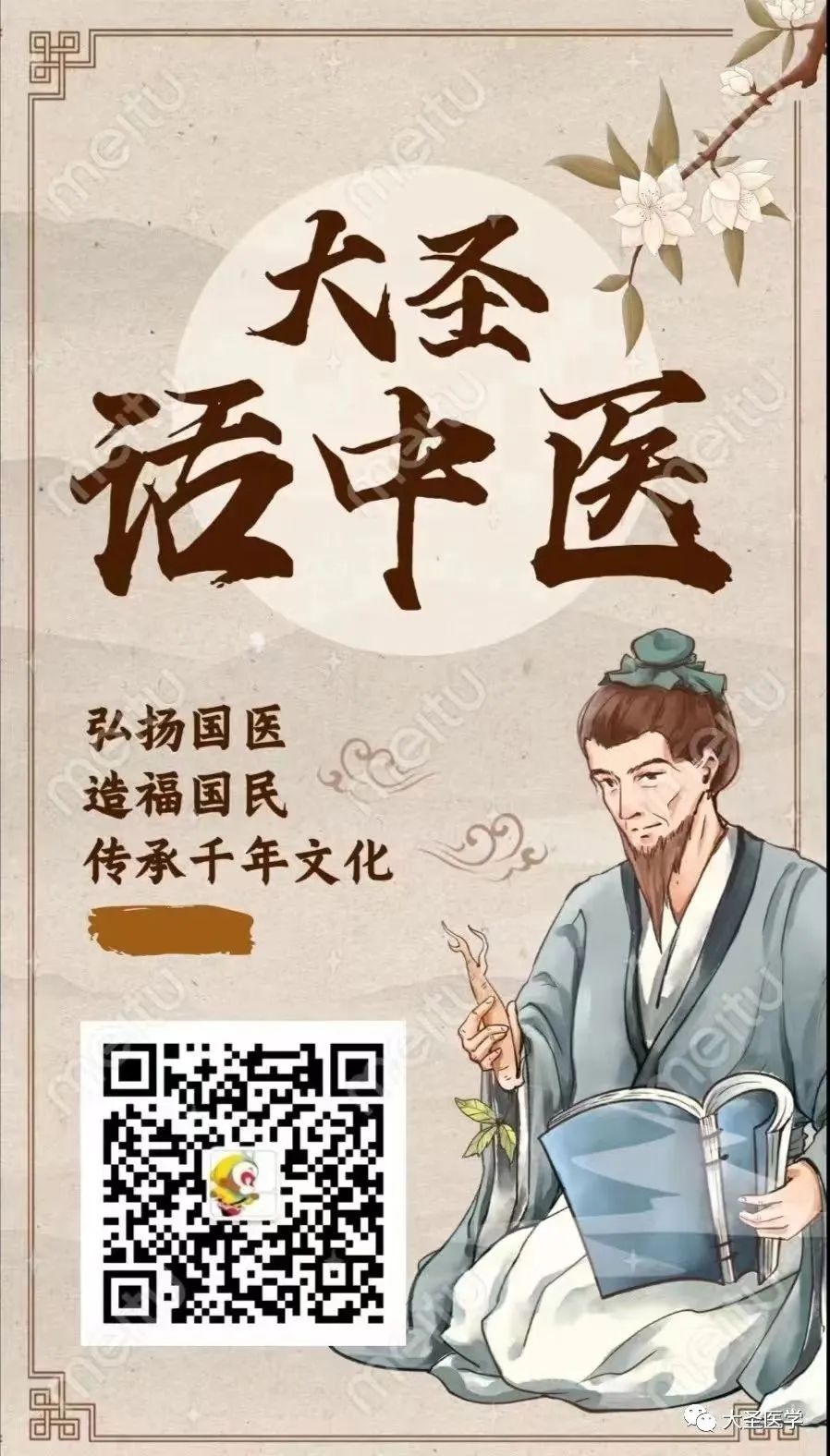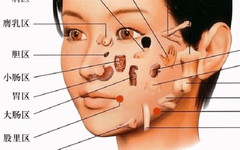Every morning at seven o’clock, we meet on time to study Traditional Chinese Medicine!

The method of diagnosing diseases in Traditional Chinese Medicine (TCM) is commonly referred to as the Four Examinations, which includes observation (望, wàng), listening (闻, wén), inquiry (问, wèn), and palpation (切, qiè). This is abbreviated as “Four Examinations”. The application of the Four Examinations in TCM beauty therapy is extensive. Below is a detailed description.
1. Application of Observation in Beauty Therapy:
This involves the beautician using their visual skills to observe the client’s entire body and specific areas. This is then combined with other diagnostic methods for comprehensive analysis. It includes observing the whole body, local areas, spirit (神, shén), tongue, skin, and excretions.
1.1. Observing Spirit:
Spirit refers to the overall vitality of the human body. It includes both broad and narrow definitions of spirit.
(1) Obtaining Spirit (得神, dé shén): This indicates a full spirit, characterized by sufficient essence and vigorous energy. Manifestations include clear consciousness, articulate speech, bright eyes, rosy complexion, natural expressions, quick reactions, agile movements, relaxed posture, firm muscles, and steady breathing. This is the normal spirit of a person, indicating normal organ function.
(2) Deficient Spirit (少神, shǎo shén): This indicates insufficient spirit and essence. Manifestations include lack of energy, excessive sleep, forgetfulness, low voice, dull eyes, pale complexion, shallow breathing, and sluggish movements. This suggests a deficiency in organ function.
(3) Lost Spirit (无神, wú shén): This indicates a loss of spirit, characterized by depletion of essence and energy. Manifestations include confusion, incoherent speech, groping for clothes and bed, absent-mindedness, dull eyes, fixed pupils, dark complexion, impaired movements, abnormal breathing, and significant weight loss. This indicates severe organ dysfunction.
(4) False Spirit (假神, jiǎ shén): This is a temporary improvement in spirit seen in critically ill patients. Manifestations include a previously lost spirit suddenly appearing improved, brightening of the eyes, excessive speech, desire to see relatives, or a previously low voice suddenly becoming bright, or a previously dark complexion suddenly becoming rosy, or a previously poor appetite suddenly increasing.
1.2. Observing Color:
This method involves diagnosing diseases by observing the color of the client’s complexion, skin, and other surface tissues. In China, as a yellow race, the normal complexion should be a subtle red-yellow with a radiant glow. However, variations may occur due to regional, seasonal, and environmental factors. Generally, the five colors (青, qīng; 赤, chì; 黄, huáng; 白, bái; 黑, hēi) are used to diagnose internal changes in the client.
(1) Green (青, qīng): Indicates cold syndromes, pain syndromes, blood stasis, convulsions, and liver diseases. Green is associated with the liver; if the client has a green face and red ears, it often indicates liver fire; if the green is dark, it often indicates stagnant fire; if a woman has a green complexion, it suggests a strong liver and weak spleen, often leading to menstrual irregularities or excessive anger; if a child has a greenish hue between the eyebrows, nose, and lips, it often indicates internal liver wind or impending liver wind.
(2) Red (赤, chì): Indicates heat syndromes; slight redness indicates deficiency heat; bright red indicates excess heat; if the complexion is red, it indicates excessive heat; if both cheeks are flushed, it indicates yin deficiency with excessive fire.
(3) Yellow (黄, huáng): Indicates deficiency syndromes and dampness syndromes; if the complexion is pale yellow and lacks luster, it indicates spleen and stomach qi deficiency and insufficient blood; if the entire face and body are yellow, it indicates jaundice; if yellow and emaciated, it often indicates stomach deficiency heat; if the complexion is pale with severe abdominal pain, it often indicates cold congealing in the middle burner.
(4) White (白, bái): Indicates deficiency syndromes, cold syndromes, blood loss, qi depletion, and parasitic diseases. A white complexion often indicates insufficient qi and blood with cold congealing in the meridians; a pale complexion with abdominal pain often indicates cold congealing in the middle burner; patchy white areas on the face often indicate vitiligo.
(5) Black (黑, hēi): Indicates kidney deficiency, cold syndromes, pain syndromes, water retention, and blood stasis. If the eye sockets are black, it often indicates kidney deficiency, water retention, and blood stasis; a dark complexion often indicates excessive internal cold; if the complexion is dark and dull, regardless of whether the illness is new or old, it often indicates insufficient yang qi.
1.3. Observing the Face:
The face is a major area affecting human beauty. By observing the color and shape of the face, one can understand the internal emotions, spirit, and nature of diseases, as well as cold, heat, deficiency, and excess.
(1) The facial color can be diagnosed according to the five colors, and the relationship between facial parts and internal organs is as follows: the forehead corresponds to the head; the upper part corresponds to the throat, the middle (Yintang, 印堂) corresponds to the lungs, and the lower part corresponds to the heart; below the chin corresponds to the liver; the left and right of the liver correspond to the gallbladder, and below the liver (the tip of the nose) corresponds to the spleen; the sides of the spleen correspond to the stomach; the center (below the cheekbones) corresponds to the large intestine; the sides correspond to the kidneys; below the Ming Tang corresponds to the bladder.
(2) Facial Features: Wrinkles are a sign of skin aging; if wrinkles appear that do not match the normal age, it suggests premature aging; rough skin is related to the type of skin (see skin classification); spots commonly include chloasma (often caused by liver qi stagnation and disharmony of the Chong and Ren meridians), black spots (often caused by blood stasis), and freckles (often caused by insufficient kidney water, excess fire in the face, or external wind invasion); facial swelling often indicates edema.

1.4. Observing the Eyes:
This also involves diagnosing cold, heat, deficiency, and excess according to the five colors. The five wheels of the eyes correspond to the internal organs: red at the corners of the eyes indicates heart fire; red sclera indicates lung fire; swollen and inflamed eyelids indicate spleen fire; overall red and swollen eyes indicate liver fire; pale eyes indicate blood deficiency; cloudy eyes indicate dampness; elderly individuals with swollen eyelids indicate kidney qi deficiency; localized small painful bumps on the eyelids are called styes; eyelid surface protrusions are called chalazia, often caused by spleen dampness and stomach heat, resulting from damp-heat accumulation.

1.5. Observing the Skin:
The classification of skin is based on seven types. However, the color and shape of the skin can assist in diagnosing diseases. The skin color corresponds to the five colors. The shapes include the following:
(1) Moist and Dry: Normal skin is moist and shiny, indicating abundant essence and fluids; if the skin is dry, it often indicates fluid deficiency; rough skin lacking elasticity often indicates aging due to blood deficiency; skin resembling fish scales often indicates blood deficiency with stasis; skin peeling like snake skin or widespread lesions often indicates skin diseases caused by wind.
(2) Swelling: Skin that is puffy and does not rebound when pressed indicates edema.
(3) Spots and Rashes: Spots are red, flat areas on the skin that do not hurt when touched, with distinctions between yin and yang spots; rashes are raised red spots resembling millet, which can be differentiated into measles, rubella, and urticaria.
(4) White Blisters, Water Blisters, Itchy Skin, Eczema, and Heat Rashes: White blisters and water blisters are both raised vesicles on the skin, with the former being small papules and the latter varying in size. Itchy skin occurs with dense clusters of small red spots, often in summer, caused by damp-heat accumulation; eczema, also known as immersion dermatitis, initially presents as red spots, then swelling, papules, or blisters. Following blister rupture, it can lead to oozing, erosion, and scabbing, often due to wind-heat remaining on the skin.
(5) Boils, Carbuncles, Furuncles, and Abscesses: Red, swollen, and raised lesions accompanied by heat and pain belong to yang syndromes, often caused by internal damp-heat and blood stasis; carbuncles are diffuse swellings without heads, with unchanged skin color and little pain, belonging to yin syndromes, often due to qi and blood deficiency leading to cold phlegm stagnation or internal heat attacking the muscles; furuncles initially appear as small, hard, deep, and painful lesions; abscesses are small, round, red, swollen, and painful lesions that easily suppurate, often caused by summer dampness on the skin or internal damp-heat.

1.6. Observing Skin Lesions:
(1) Desquamation: Also known as scales or skin flakes, refers to the shedding of skin from the surface. Pathological desquamation can be dry or oily. Dry desquamation is often associated with blood deficiency and wind-dryness; oily desquamation is often due to damp-heat; long-term cases often show blood stasis and internal dryness.
(2) Skin Cracking: Refers to the appearance of fissures of varying sizes and depths on the skin surface; often associated with blood deficiency and wind-dryness, blood-heat and wind-dryness, spleen deficiency with dampness, and damp toxins.
(3) Wrinkles: The appearance of wrinkles that do not match the normal age often suggests premature aging. This is related to congenital endowment and chronic systemic diseases, as well as factors like wind exposure, sun exposure, water immersion, and fatigue.
(4) Rough Skin: Related to skin type, often due to lack of water, lack of oil, or excessive oil secretion.
(5) Skin Atrophy: Refers to skin that is thinner and shinier than normal, with surface textures disappearing or differing from normal. This is often related to toxic invasion, cold congealing, and blood stasis, or liver and kidney yin deficiency.
(6) Skin Scarring: Refers to the traces left by tissue proliferation after skin injury healing. This is often due to blood stasis and damp-heat accumulation.
(7) Skin Thickening: Refers to localized thickening and dryness of the skin surface. This is often due to spleen deficiency with blood dryness or spleen deficiency leading to dampness and dryness, or qi stagnation and blood stasis, or wind-damp obstruction.
(8) Skin Redness: Any appearance of redness on the skin that does not hurt when touched is referred to as such; this is often due to yin deficiency with excessive fire, blood-heat and wind-dryness, external wind invasion, wind-heat injuring the nutrients, or damp-heat stagnation.
(9) Skin Purpura: Often due to blood-heat recklessly moving, damp-heat descending, spleen not controlling blood, kidney and spleen yang deficiency, blood stasis, and cold congealing.
(10) Skin White Spots: Often due to disharmony of qi and blood, summer dampness stagnating the skin, or parasitic accumulation.
(11) Skin Brown Spots: Often due to liver qi stagnation, spleen deficiency leading to loss of movement, kidney yin deficiency, or blood stasis.
(12) Skin Changes: Refers to localized or widespread dryness and roughness of the skin, resembling fish scales. This is often due to blood deficiency and wind-dryness, blood-heat and wind-dryness, or damp-heat obstructing the skin or fluids not being distributed.
(13) Acne: Also known as pimples or teenage acne; often related to lung, stomach, and blood heat, or heat toxins.
Have you learned today’s TCM knowledge?
Let’s study TCM together!!


